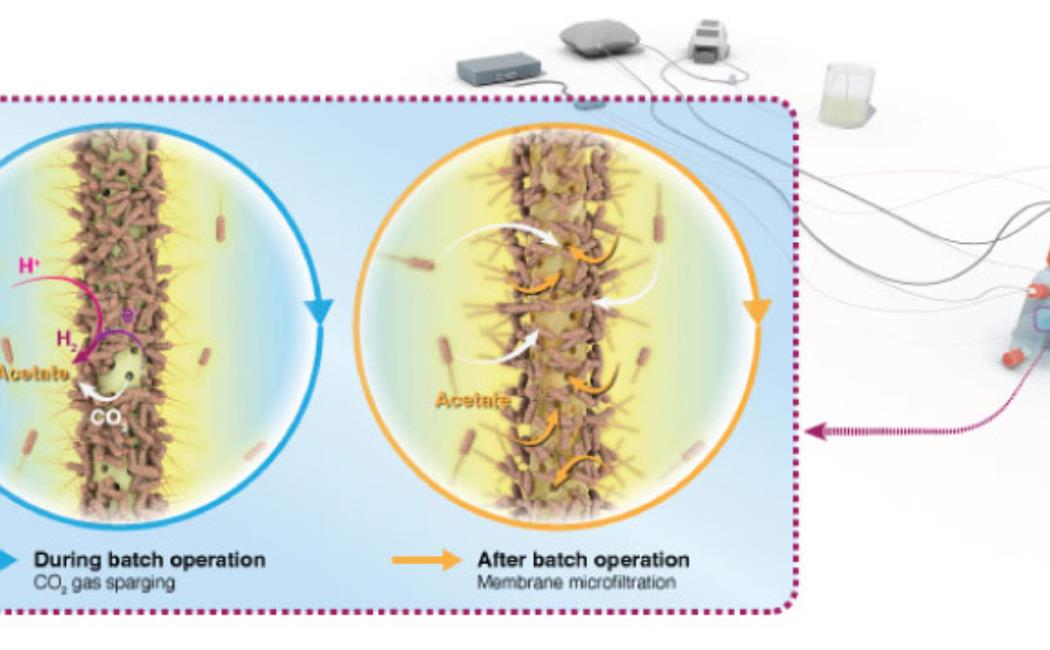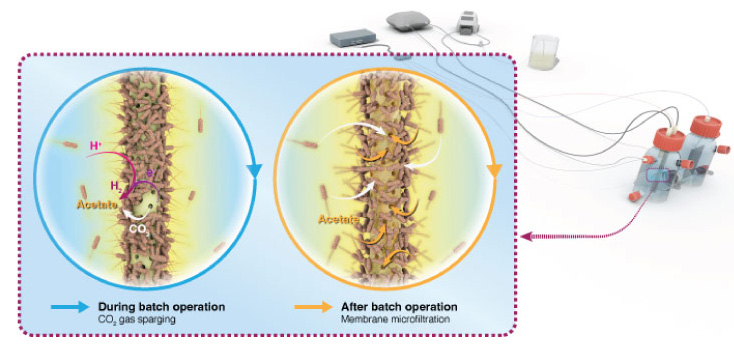


20 September, 2022

Microporous conductive membranes developed at KAUST are expected to help shape the future of microbial electrosynthesis for CO2 conversion technologies. The membranes simultaneously stimulate the growth of CO2-eating microbes and aid separation of the biochemical products.
Microbial electrosynthesis is a promising strategy to reduce the human carbon footprint. It uses specific living microbes to transform CO2 into useful chemicals in an electrochemical cell via a reduction reaction under applied voltage. With the reduction of CO2, the microbes multiply to form a biofilm on the cathode of the cell, but their growth involves a tedious multistep enrichment process that takes more than 30 days.
This enrichment process is a major bottleneck for achieving industrially attractive biochemical production and CO2 bioconversion. A further drain is the complex and energy intensive techniques deployed to isolate the products, which mainly consist of acetate.